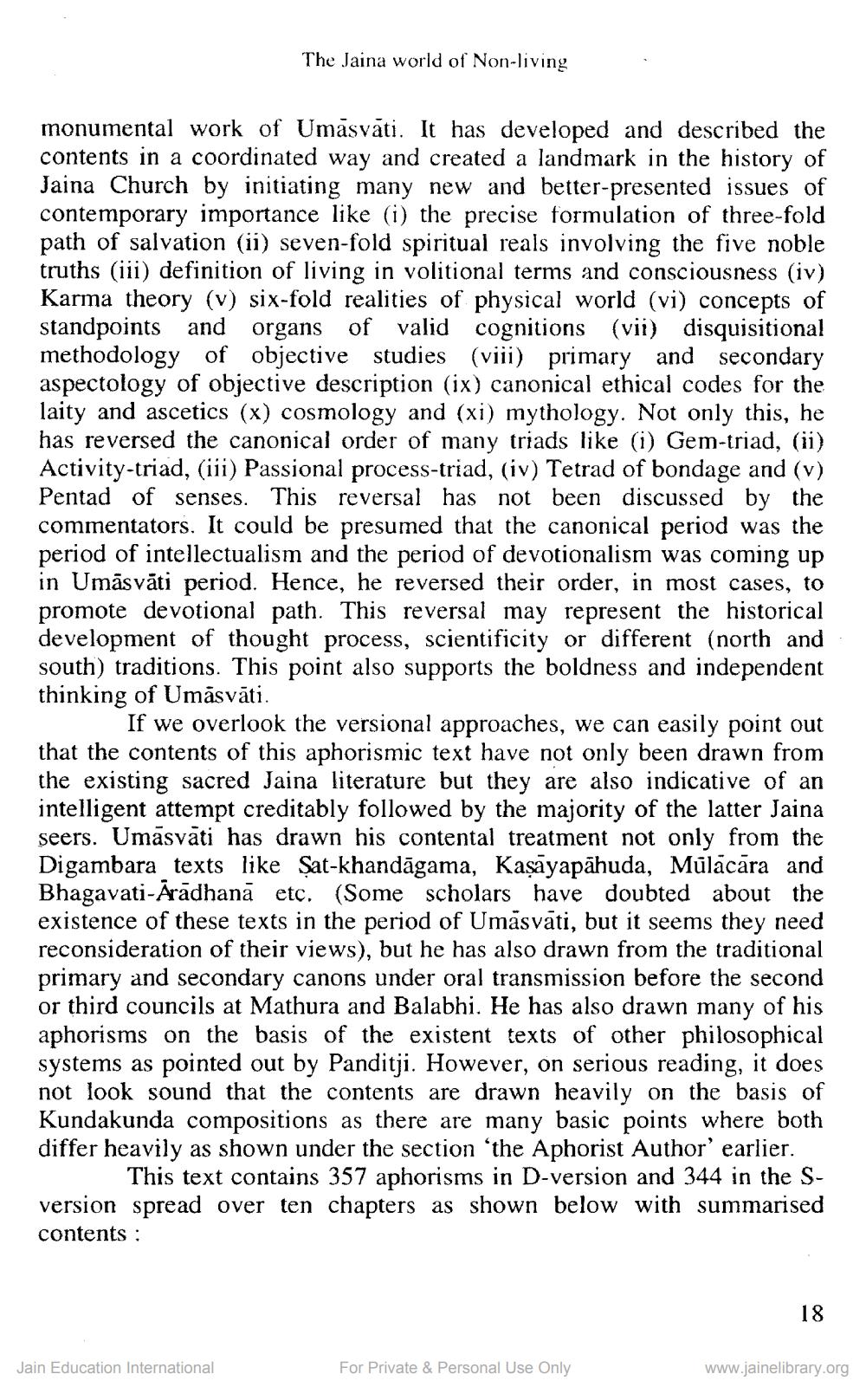________________
The Jaina world of Non-living
monumental work of Umāsvāti. It has developed and described the contents in a coordinated way and created a landmark in the history of Jaina Church by initiating many new and better-presented issues of contemporary importance like (i) the precise formulation of three-fold path of salvation (ii) seven-fold spiritual reals involving the five noble truths (iii) definition of living in volitional terms and consciousness (iv) Karma theory (v) six-fold realities of physical world (vi) concepts of standpoints and organs of valid cognitions (vii) disquisitional methodology of objective studies (viii) primary and secondary aspectology of objective description (ix) canonical ethical codes for the laity and ascetics (x) cosmology and (xi) mythology. Not only this, he has reversed the canonical order of many triads like (i) Gem-triad, (ii) Activity-triad, (iii) Passional process-triad, (iv) Tetrad of bondage and (v) Pentad of senses. This reversal has not been discussed by the
mmentators. It could be presumed that the canonical period was the period of intellectualism and the period of devotionalism was coming up in Umāsvāti period. Hence, he reversed their order, in most cases, to promote devotional path. This reversal may represent the historical development of thought process, scientificity or different (north and south) traditions. This point also supports the boldness and independent thinking of Umāsvāti.
If we overlook the versional approaches, we can easily point out that the contents of this aphorismic text have not only been drawn from the existing sacred Jaina literature but they are also indicative of an intelligent attempt creditably followed by the majority of the latter Jaina seers. Umāsvāti has drawn his contental treatment not only from the Digambara texts like Sat-khandāgama, Kasāyapāhuda, Mülacara and Bhagavati-Arādhanā etc. (Some scholars have doubted about the existence of these texts in the period of Umasvati, but it seems they need reconsideration of their views), but he has also drawn from the traditional primary and secondary canons under oral transmission before the second or third councils at Mathura and Balabhi. He has also drawn many of his aphorisms on the basis of the existent texts of other philosophical systems as pointed out by Panditji. However, on serious reading, it does not look sound that the contents are drawn heavily on the basis of Kundakunda compositions as there are many basic points where both differ heavily as shown under the section the Aphorist Author' earlier.
This text contains 357 aphorisms in D-version and 344 in the Sversion spread over ten chapters as shown below with summarised contents :
18
Jain Education International
For Private & Personal Use Only
www.jainelibrary.org




